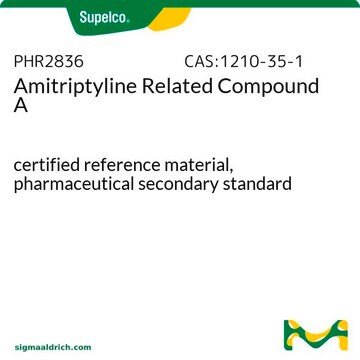1299007
USP
Griseofulvin
United States Pharmacopeia (USP) Reference Standard
Synonim(y):
(2S)-trans-7-Chloro-2′,4,6-trimethoxy-6′-methylspiro(benzofuran-2[3H],1′-[2]cyclohexene)-3,4′-dione
About This Item
Polecane produkty
klasa czystości
pharmaceutical primary standard
rodzina API
griseofulvin
producent / nazwa handlowa
USP
Zastosowanie
pharmaceutical (small molecule)
format
neat
temp. przechowywania
2-8°C
ciąg SMILES
ClC1=C(O[C@@]2(C(OC)=CC(C[C@H]2C)=O)C3=O)C3=C(OC)C=C1OC
InChI
1S/C17H17ClO6/c1-8-5-9(19)6-12(23-4)17(8)16(20)13-10(21-2)7-11(22-3)14(18)15(13)24-17/h6-8H,5H2,1-4H3/t8-,17+/m1/s1
Klucz InChI
DDUHZTYCFQRHIY-RBHXEPJQSA-N
Szukasz podobnych produktów? Odwiedź Przewodnik dotyczący porównywania produktów
Opis ogólny
Zastosowanie
- Griseofulvin Capsules
- Griseofulvin Tablets
- Ultramicrosize Griseofulvin Tablets
- Griseofulvin Oral Suspension
Komentarz do analizy
Inne uwagi
produkt powiązany
Hasło ostrzegawcze
Danger
Zwroty wskazujące rodzaj zagrożenia
Zwroty wskazujące środki ostrożności
Klasyfikacja zagrożeń
Carc. 2 - Repr. 1B - Skin Sens. 1
Kod klasy składowania
6.1C - Combustible acute toxic Cat.3 / toxic compounds or compounds which causing chronic effects
Klasa zagrożenia wodnego (WGK)
WGK 3
Temperatura zapłonu (°F)
Not applicable
Temperatura zapłonu (°C)
Not applicable
Certyfikaty analizy (CoA)
Poszukaj Certyfikaty analizy (CoA), wpisując numer partii/serii produktów. Numery serii i partii można znaleźć na etykiecie produktu po słowach „seria” lub „partia”.
Masz już ten produkt?
Dokumenty związane z niedawno zakupionymi produktami zostały zamieszczone w Bibliotece dokumentów.
Nasz zespół naukowców ma doświadczenie we wszystkich obszarach badań, w tym w naukach przyrodniczych, materiałoznawstwie, syntezie chemicznej, chromatografii, analityce i wielu innych dziedzinach.
Skontaktuj się z zespołem ds. pomocy technicznej






